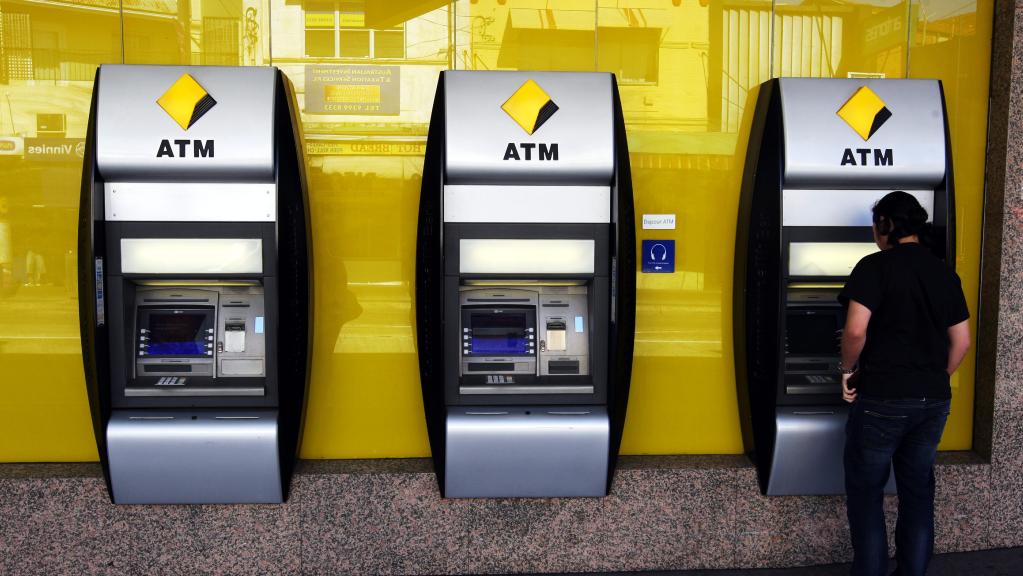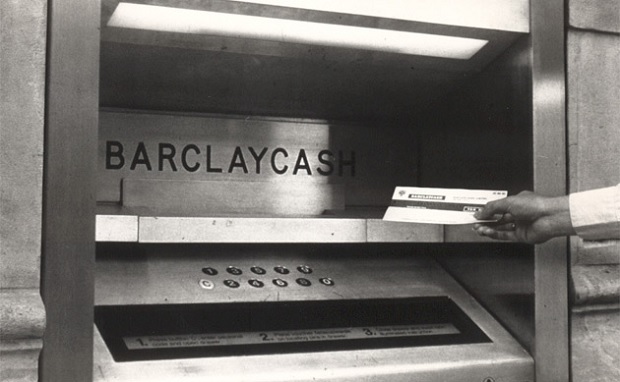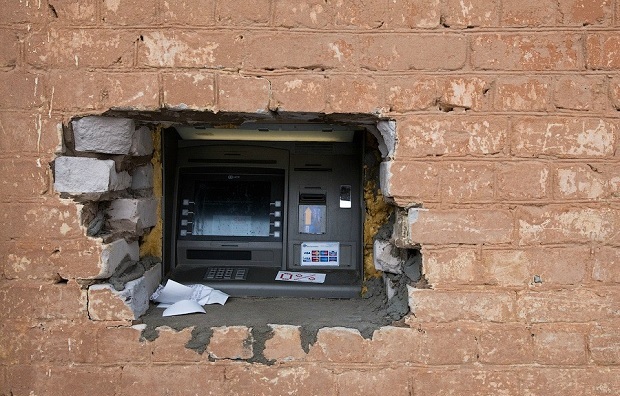Carding Forum
Professional
- Messages
- 2,788
- Reaction score
- 1,223
- Points
- 113
It was on June 27, 1967 that the first ATM was installed

How an ATM works: basic principles and interesting facts.
Today, devices that are found on almost every corner and for many serve as the only way to cash out their funds from a bank account are celebrating their 50th anniversary. We are all used to ATMs, but have you ever wondered how this device works? Over the past 20 years, ATMs have become an integral part of our everyday life. So to know their history and how they are arranged and on what principle they work is simply necessary.
The first ATM appeared in 1967 in North London. It was established by the English bank Barclays. The device was developed by the Scotsman John Shepard-Barron, who somehow could not withdraw money from his bank account simply because the bank branch was closed. So John took inspiration from the chocolate vending machine, suggested putting money in the car instead of sweets, and made life easier for all future generations.

The first ATM presented by the English bank Barclays on June 27, 1967.
First, the machine checks the authenticity of your card. To do this, the ATM has two readers: the first looks for a special code on the magnetic stripe of the card to confirm its validity. The second device calculates the user's account number and password to verify the entered PIN. As soon as the system confirms the password, the ATM contacts your bank through the processing center, sends requests to it and executes the client's "orders".
If the user wants to withdraw money, then the processing makes an electronic transfer of the required amount from the user's bank account to his own. Immediately after the completion of the transfer, the computing center instructs the ATM to issue money.
Issuing bank is the bank that issued the card; acquiring bank - the bank that owns the ATM
To connect the ATM with the processing, either simple telephone lines are used, the connection to which is made via a modem, or dedicated ones. Thus, the operation of an ATM is similar to that of an Internet Service Provider (ISP).
In addition to customer requests, the ATM also sends all information about its work to the computing center: it warns in advance that the money has run out, informs about a malfunction, about any errors that have occurred.
This is how an ATM looks like, which also accepts banknotes.
A banknote goes a long way before it appears in the window in front of a waiting client. First, the feeder device, which is in each cassette, makes sure that one banknote does not accidentally catch on another. Then a special Double Detect device checks the incoming banknotes for compliance with the client's request: whether they are of the same size, thickness, or skew. All this is done using sensors. Further, paper money enters the diverter, which either sends it further to the storage device, or, in the event of some error, dumps the banknotes into a special divert cassette. It is designed for torn, stuck together, damaged banknotes. There is also money that the client did not take within a certain period of time from the issuance window. Only when the required amount is collected in the storage device, it is issued to the user. Do not forget to remember this to everyone the next time you withdraw money from an ATM.
In the upper part of the ATM there is its electronic filling - a computer. There is also a device for receiving and reading cards (card reader) and two printers: check and magazine. The first is responsible for issuing customer checks, and the second records everything that happens to the ATM on its tape. By the way, the owner of the ATM is obliged to keep this information for two years. Also in the upper part there is a security module and a device that encodes information about the entered pin code. Also located in this part are the devices visible to the user: monitor, speaker, keyboard and indicator lights.

A box with money, aka a cash machine, aka an ATM.

How an ATM works: basic principles and interesting facts.
Today, devices that are found on almost every corner and for many serve as the only way to cash out their funds from a bank account are celebrating their 50th anniversary. We are all used to ATMs, but have you ever wondered how this device works? Over the past 20 years, ATMs have become an integral part of our everyday life. So to know their history and how they are arranged and on what principle they work is simply necessary.
The first ATM appeared in 1967 in North London. It was established by the English bank Barclays. The device was developed by the Scotsman John Shepard-Barron, who somehow could not withdraw money from his bank account simply because the bank branch was closed. So John took inspiration from the chocolate vending machine, suggested putting money in the car instead of sweets, and made life easier for all future generations.

The first ATM presented by the English bank Barclays on June 27, 1967.
How an ATM works: basic principles
An ATM is primarily a device for processing information. Any ATM is associated with a computing center (processing), which controls a specific ATM network. The network itself can belong to either a particular bank or a separate service provider.First, the machine checks the authenticity of your card. To do this, the ATM has two readers: the first looks for a special code on the magnetic stripe of the card to confirm its validity. The second device calculates the user's account number and password to verify the entered PIN. As soon as the system confirms the password, the ATM contacts your bank through the processing center, sends requests to it and executes the client's "orders".
If the user wants to withdraw money, then the processing makes an electronic transfer of the required amount from the user's bank account to his own. Immediately after the completion of the transfer, the computing center instructs the ATM to issue money.
Issuing bank is the bank that issued the card; acquiring bank - the bank that owns the ATM
To connect the ATM with the processing, either simple telephone lines are used, the connection to which is made via a modem, or dedicated ones. Thus, the operation of an ATM is similar to that of an Internet Service Provider (ISP).
In addition to customer requests, the ATM also sends all information about its work to the computing center: it warns in advance that the money has run out, informs about a malfunction, about any errors that have occurred.
What does an ATM consist of
The ATM consists of two main parts: the upper, or user, and the lower, or safe. In the lower part there is a device for dispensing money - a dispenser (the dispensing window is also called a dispenser). The safe contains several cassettes for storing banknotes (can be from two to five). Typically, two to three thousand banknotes are loaded into a cassette. They can also be configured for any type of banknote, for a specific length and width of the banknote. After loading the money into the cassette, the latter is closed with a special key, sealed and issued to the collectors. The collection process usually takes 15-30 minutes.This is how an ATM looks like, which also accepts banknotes.
A banknote goes a long way before it appears in the window in front of a waiting client. First, the feeder device, which is in each cassette, makes sure that one banknote does not accidentally catch on another. Then a special Double Detect device checks the incoming banknotes for compliance with the client's request: whether they are of the same size, thickness, or skew. All this is done using sensors. Further, paper money enters the diverter, which either sends it further to the storage device, or, in the event of some error, dumps the banknotes into a special divert cassette. It is designed for torn, stuck together, damaged banknotes. There is also money that the client did not take within a certain period of time from the issuance window. Only when the required amount is collected in the storage device, it is issued to the user. Do not forget to remember this to everyone the next time you withdraw money from an ATM.
In the upper part of the ATM there is its electronic filling - a computer. There is also a device for receiving and reading cards (card reader) and two printers: check and magazine. The first is responsible for issuing customer checks, and the second records everything that happens to the ATM on its tape. By the way, the owner of the ATM is obliged to keep this information for two years. Also in the upper part there is a security module and a device that encodes information about the entered pin code. Also located in this part are the devices visible to the user: monitor, speaker, keyboard and indicator lights.

A box with money, aka a cash machine, aka an ATM.
Interesting facts about the operation of an ATM
- The ATM can issue no more than 40 banknotes in one operation.
- The money issued by the device must be collected within 30 seconds, otherwise the ATM will take it back.
- Outdoor ATMs are 100% waterproof. But at the same time they are sensitive to cold. At a temperature of 10-15 degrees of frost, they may not turn on, not give out money, take a long time to solve a problem, etc.
- ATM machines are made from over 100 kg of steel. They are capable of withstanding a 22 ton impact.
- If a thief gets inside the device, exploding paint containers will immediately ruin all banknotes. Therefore, scammers most often use skimming devices that intercept information on the card, hidden cameras to spy on the pin code, as well as sticky tapes on which banknotes are delayed at the time of issuance.
- According to a widespread theory, if someone tries to rob you near an ATM, you need to dial your PIN-code in reverse. This is a myth, of course. The idea of an inverted pin code existed and was patented by Joseph Singer in 1998. However, not a single bank was interested in buying this patent.
